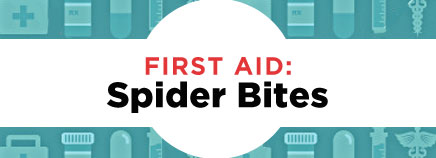
Because most spider bites don’t fully penetrate human skin, they usually cause only mild reactions. However, black widow and brown recluse spider bites can cause serious reactions and need immediate care. Allergic reactions can happen but are rare.
Signs and Symptoms
Of a brown recluse spider bite:
- red blister in the center with surrounding bluish discoloration around the bite
- swelling or redness around the bite
- development of pain around the bite within 2 to 8 hours
- joint stiffness or pain
- nausea, vomiting
- body rash
- fever and chills
- fatigue
Of a black widow spider bite:
- rigid, painful muscles within 8 hours
- no sign of the bite on the skin
- abdominal (belly) pain and cramping
- nausea and vomiting
- breathing trouble
Of an allergic reaction:
- swelling of the face or mouth
- difficulty swallowing or speaking
- chest tightness, wheezing, or difficulty breathing
What to Do
If your child has been bitten by a spider:
- Wash the area with soap and water.
- Apply an ice pack or a cool wet cloth to relieve pain and swelling.
Seek Medical Care Right Away
If:
- your child has any signs of an allergic reaction
- your child develops any kind of rash after a bite
- the area begins to look infected (increasing redness, pain, swelling, warmth, or pus)
- you think your child was bitten by a brown recluse or black widow spider
Think Prevention!
- Make sure garages, attics, and woodpiles are free of spider webs.
- Make sure kids wear long sleeves and pants when playing around garages, attics, and woodpiles, etc.
- Firewood should be kept outside the house to avoid bringing spiders inside.
Reviewed by: Steven Dowshen, MD
Date reviewed: April 2014

